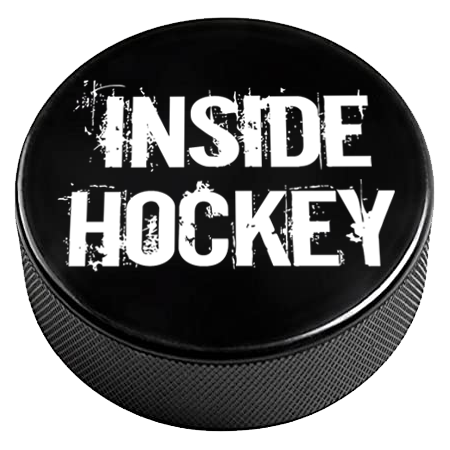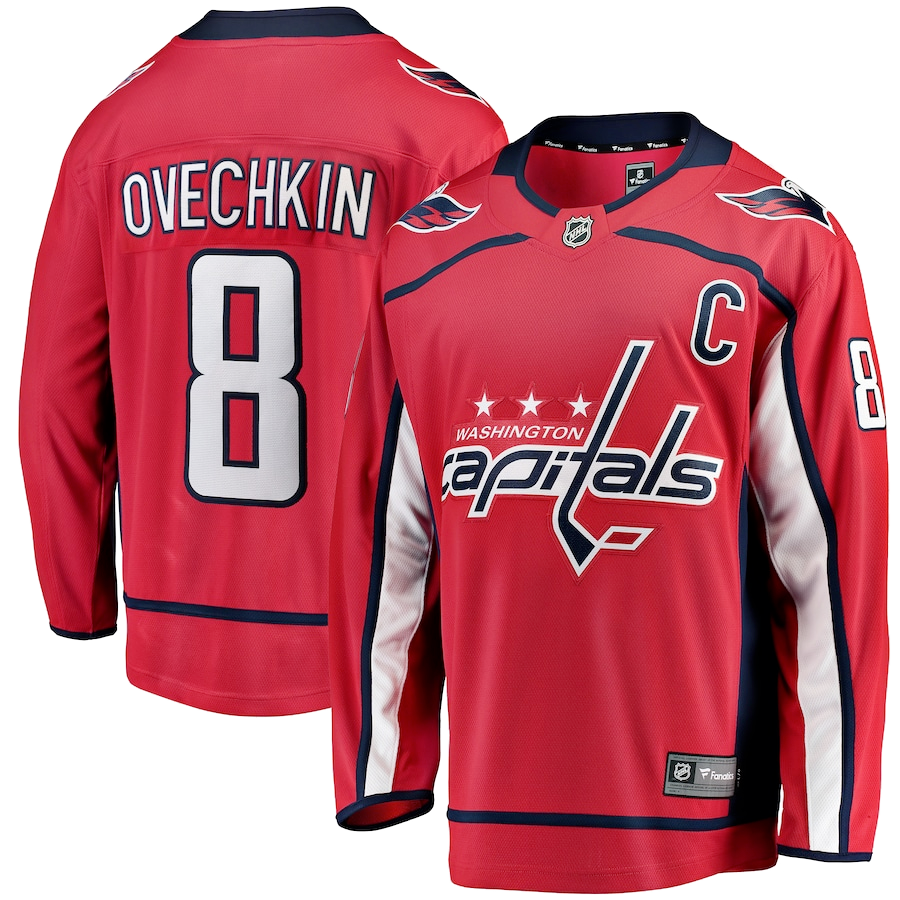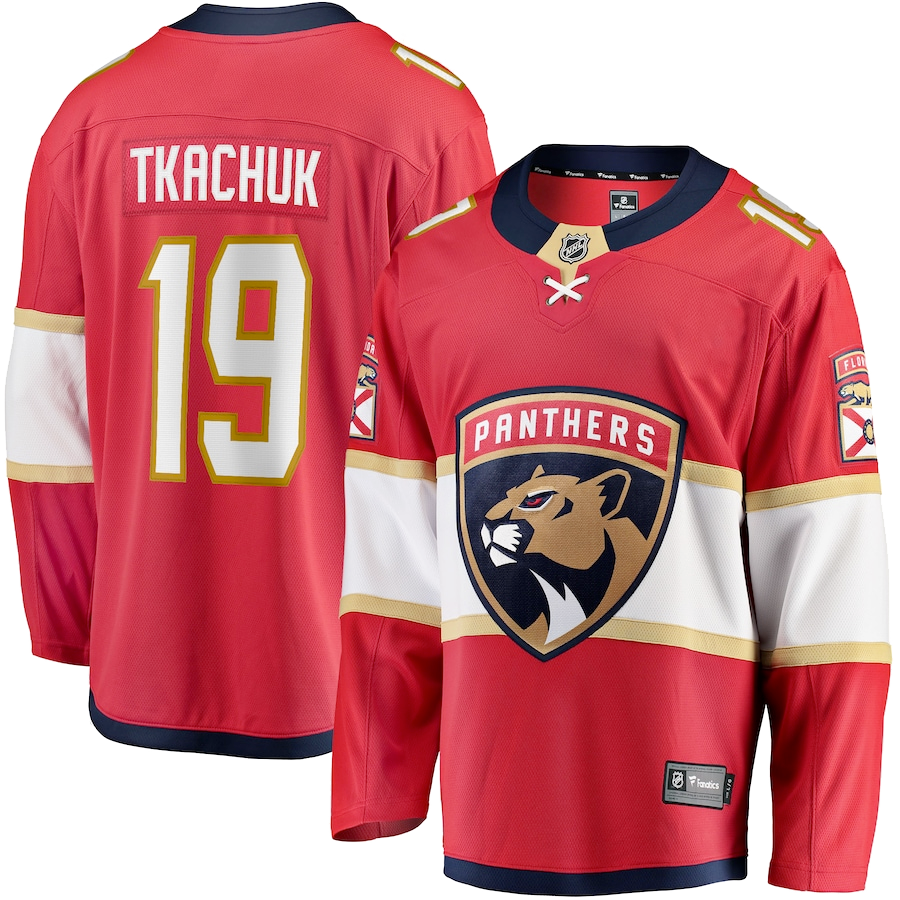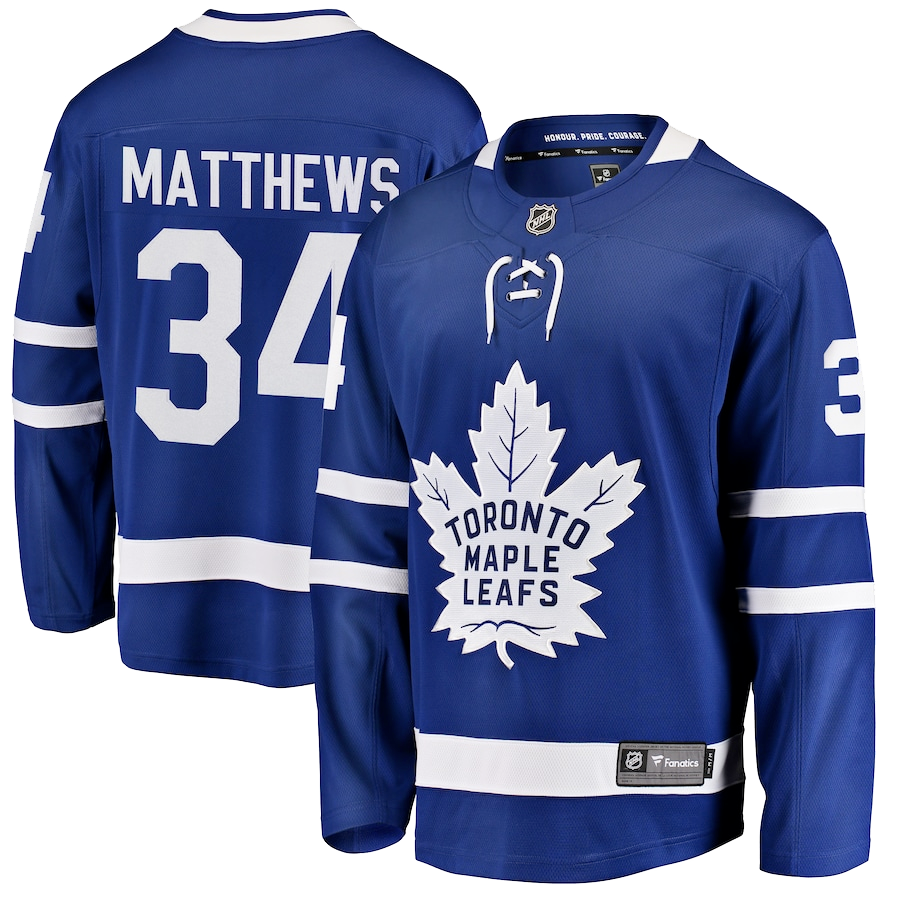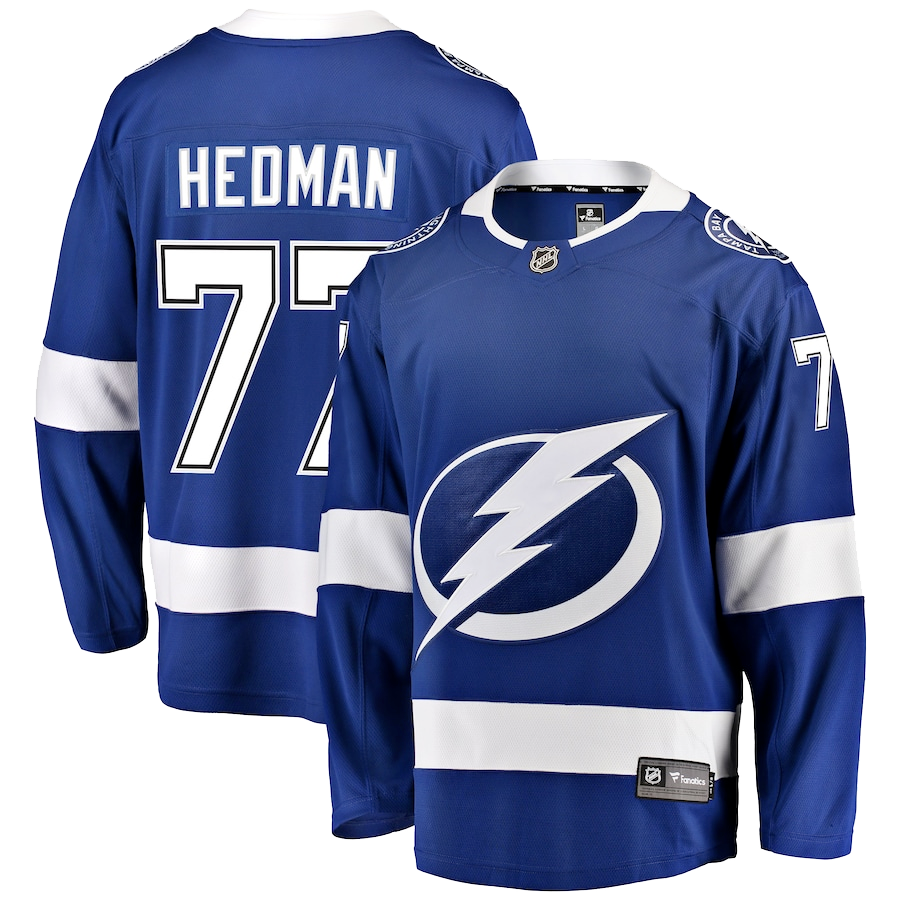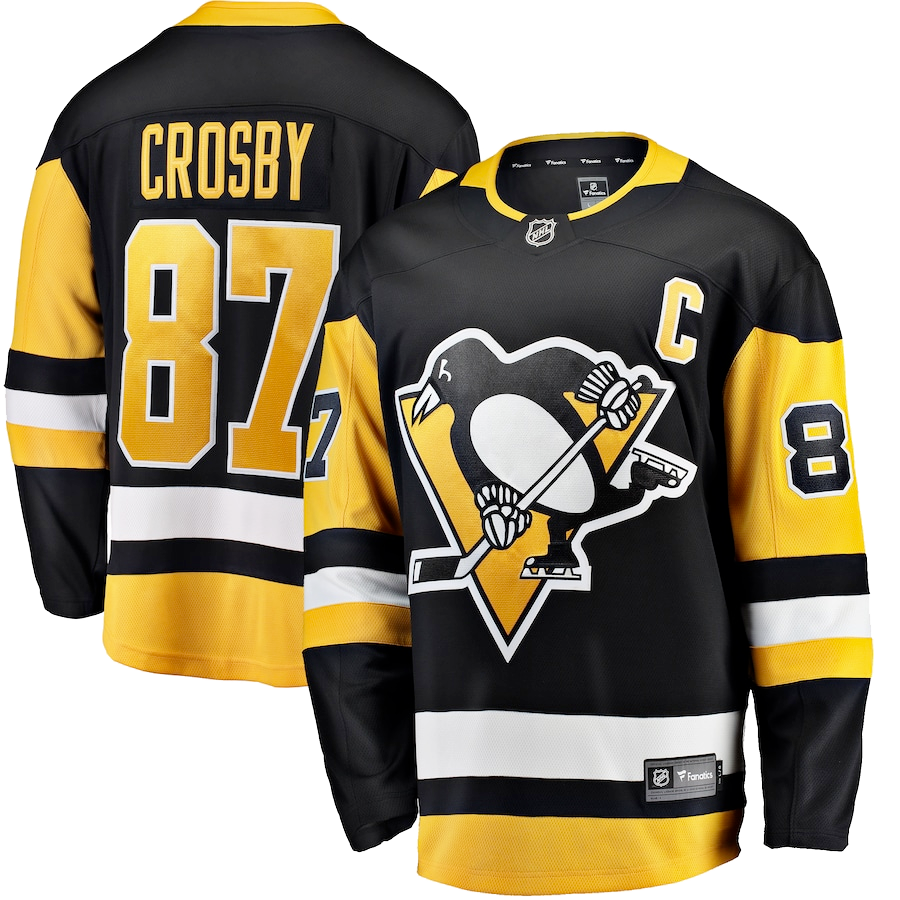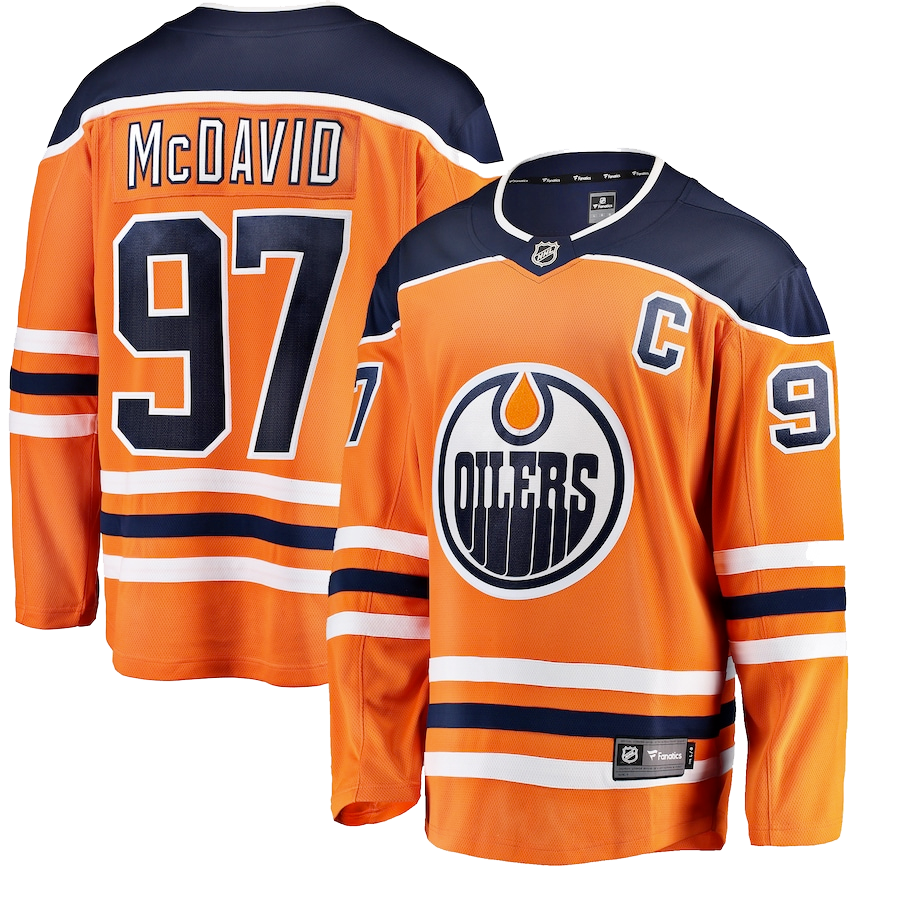A new regular season is almost upon us for the 2015-15 National Hockey League (NHL) season and I offer I offer my predictions for the regular season finish for the NHL’s Metropolitan Division of the Eastern Conference.
Much like last year’s predictions, although I provide my predictions in order of finish in the division during the regular season, as anyone who closely follows the NHL knows, it’s not about where you finish the regular season – although winning the division and possibly the best record in the Eastern Conference, thus clinching home ice advantage throughout, never hurts – it’s all about qualifying for the Stanley Cup playoffs, where anything can happen and usually does.
One other point to make: the NHL’s playoff system allows for the top eight (8) teams (total points) from each conference to qualify for the Stanley Cup playoffs. Each division in the Eastern Conference has eight teams, each (note: the Western Conference has seven in each division but also allows eight teams to qualify for the Stanley Cup playoffs, thus opening the door for an impending expansion); however, I believe that the Metropolitan Division will have five (5) teams qualify for the Stanley Cup playoffs and the Eastern Conference’s Atlantic Division will qualify three (3) teams, so the first five teams in my predictions will qualify for the Stanley Cup playoffs.
With that, here’s how I believe the Metropolitan Division will pan out, in order of regular season finish:
1. Washington Capitals – the Caps showed evidence that their organizational overhaul was justified after finishing tied for 2nd in the Metro Division after failing to qualify for the playoffs for the first time in six seasons during the 2013-14 season. The Caps won their 1st round playoff series against the Islanders and endured a devastating Game 7 overtime loss to the New York Rangers in the Eastern Conference semifinals. Although it’s tough to rival the seismic changes the Capitals made after the last off-season when the Caps promoted Brian MacLellan to General Manager after firing George McPhee and brought in former Nashville head coach Barry Trotz as well as reshaped their blueline in acquiring via Free Agency Brooks Orpik and Matt Niskanen from the Penguins, this season’s off-season changes were also seismic as the Caps bolstered the right side of its forward lines in acquiring T.J. Oshie from the St. Louis Blues and Justin Williams from the Los Angeles Kings in separate trades. Oshie will bring grit and scoring acuity as well as arguably the NHL’s top shootout threat, although with the NHL’s change to a 3 on 3 overtime, this factor may be somewhat mitigated in value. Williams brings invaluable, 3-time Stanley Cup championship experience to the Caps, something this team who has experienced disappointing Stanley Cup runs can desperately use in April-June.
Such changes should allow the Capitals to improve both their regular and post-season fortunes as they have added to a solid foundation of an organization. Alexander Ovechkin, who recently turned 30, remains the NHL’s most feared goal-scoring threat, particularly after winning his 5th Rocket Richard Trophy as the NHL’s goal-scoring leader. Trotz provided the Capitals with much-needed stability behind the bench and brought a defense-first coach philosophy as well as bringing with him his former Nashville Predators goalie guru, Mitch Korn. Korn guided their starting goalie, Braden Holtby to rebound from a tough prior season in which he struggled, primarily due to the constant tinkering of his technique by the previous coaching staff. Although losing Mike Green to Free Agency will impact their power play as well as his overall blueline scoring prowess, a solid remaining defensive corps, improved forward lines, the ever-prolific Ovechkin, front office and coaching stability should result in the Capitals being the team to beat in the Metropolitan Division.
2. Columbus Blue Jackets – the fortunes of the Blue Jackets start and end with one word: ‘IF’, in the context of ‘if’ the Blue Jackets can stay healthy. Last season was a cataclysmic disaster as it related to injuries as the Blue Jackets easily led the NHL in the ‘Man Games Lost (to injury)’ statistic. When healthy, however, their 15-1-1 finish showed the rest of the NHL that this is a force to be reckoned with and, in the cloud that was the ‘injury bug’, a silver lining formed in allowing some of its prospects to gain invaluable NHL experience, thus allowing for quicker-than-expected, overall organizational depth, particularly in the case of Alexander Wennberg, the Blue Jackets 1st round pick (14th overall) in the 2013 NHL Entry Draft. Although the overall numbers won’t reflect it, during his last 20 games played, Wennberg was a solid, two-way pivot for the Blue Jackets.
For this season, the first of the two biggest ‘ifs’ for the Blue Jackets will be whether Ryan Murray, the Blue Jackets 1st pick in the 2012 NHL Entry Draft (2nd overall) can shake the plethora of injuries – knee, ankle, shoulder – that has hurt their blueline pairings and his overall development as a potential elite puck-moving and minute-eating defenseman. ‘If’ healthy, Murray will man the Blue Jackets 1st defensive pairing, along with David Savard, who has developed into the Blue Jackets best overall and most dependable defenseman. The second biggest ‘if’ for the Blue Jackets will be whether Sergei Bobrovsky can also avoid the long-term injuries that have hampered the Blue Jackets fortunes for the past two seasons. Bobrovsky has never played more than 58 regular season games in his NHL career, thus leading to leaning on Curtis McElhinney to play a third of the regular season games. While McElhinney is a solid backup, his workload of that many games easily exceeds the workload with his previous stops with Calgary and Anaheim when he backed up workhorse’s like Mikka Kiprusoff and Jonas Hiller, respectively. The hope that Bobrovsky returning to his own off-season training regimen will mitigate the possibility of sustaining long-term injuries and Bobrovsky can establish himself as one of the NHL’s premier workhorses and return to his 2013 Vezina (NHL’s best goaltender) form.
Injuries aside, the biggest news for the Blue Jackets was the acquisition of Brandon Saad from the Chicago Blackhawks in a blockbuster trade involving forwards Artem Anisimov, Marko Dano, Corey Tropp and Jeremy Morin. Saad brings an intensity and goal-scoring prowess that has formed the Blue Jackets most formidable, potential first scoring line in their history as well as solidifying three powerful forward lines. Saad will be paired with the Blue Jackets top two point producers in Ryan Johansen and newly-named Nick Foligno and will provide outstanding two-way play and an in-your-face style that will make the Blue Jackets a team that few will care to play against.
One thing to keep in mind: during the three prior seasons Todd Richards has been the Blue Jackets head coach, his record for the first 20 games of the season is 18-34-8; for the last 20 games in each of those three seasons, his record is 41-15-4. Should the Blue Jackets stumble out of the gate, particularly with the ascending talent level of the organization, a coaching change could be in the offing.
That factor aside, so long as they can avoid injuries, the Blue Jackets can contend for the Metropolitan Division title as well as being a team to be feared in the Stanley Cup playoffs as expectations no longer just abound, but will be met, ‘IF’…
3. New York Rangers – it would defy convention to pick the defending President’s Trophy (for most team points registered in the NHL) to finish anywhere but first in the Metropolitan Division, much less to predict the Broadway Blueshirts to finish third in the division, but with the improvements made by the Washington Capitals and the belief that the young, upstart Blue Jackets’ prior season injury woes were an aberration, it would seem to make more sense that the Rangers will face an uphill battle to defend their trophy and dominate the division standings as they did, last season. Although Martin St. Louis did fade down the stretch, losing his 52 points and, more importantly, his leadership will impact the Rangers fortunes, especially considering St. Louis was acquired via trade with the Tampa Bay Lightning to fill the leadership void by trading away Ryan Callahan in the deal, thus leaving the Rangers with a leadership void for the first time in several seasons.
On-ice, save for the St. Louis retirement, losing reliable backup goalie Cam Talbot to free agency and the departure of the speedy Carl Hagelin via trade to Anaheim in exchange for Emerson Etem, the majority of the Rangers squad remain intact. Rick Nash, fresh off of a 40-goal campaign, hopes for a repeat in performance, particularly in the goal-scoring department. Nash will flank center Derek Stepan and Right Wing Mats Zucharello to form the Rangers 1st forward line, and Derick Brassard, who has blossomed into a solid top 6 forward, will man the Rangers 2nd line along with JT Miller and Chris Kreider, who the Rangers hope can fulfill his seemingly endless promise as a potential 30+ goal scorer. The defense, now with the addition of Keith Yandle via trade from the Arizona Coyotes for a full season, will solidify what was an already stout defensive corps, quite easily the best in the Eastern Conference. Stalwarts Ryan McDonough, Dan Girardi, Marc Staal, Dan Boyle and Kevin Kline fill out the remainder of the top-six defenseman. There are no doubts in net as ‘King Henrik’ Lundqvist returns after a scary injury in January in which he sprained a blood vessel after being struck by a puck. Fortunately, Lundqvist had Talbot to fill in admirably for him, during his 23-game absence, posting a stellar 16-4-3 record before yielding to Lundqvist for the Stanley Cup playoffs. Antti Raanta, formerly of the Stanley Cup champion Blackhawks, will replace Talbot as the backup netminder but is expected to fill in for a lesser workload of 15-20 games. Alain Vigneault returns behind the Rangers’ bench for a third consecutive season, but there have been front office changes as Glen Sather has decided to step down as General Manager (GM) and promote former Asst. GM Jeff Gorton to the GM position while Sather remains as team president of hockey operations. While the Rangers will still be a solid Stanley Cup playoff team/contender and could repeat as Metropolitan Division regular season champs, it would appear that the leadership void of St. Louis could impact their fortunes beyond the scoreboard.
4. Pittsburgh Penguins – the Penguins are a team that is trending; however, that trend is going in the wrong direction. The Pens finished 4th in the Metropolitan Division standings after dominating the regular season divisional standings for the last several years. In addition to that, the Pens were dispatched in the first round of the Stanley Cup playoffs, a disturbing trend from the Cup finals, semi-finals and now to a first round elimination. Confounding the disturbing trend is the fact that two of the top five players in the world play on the same team in Sidney Crosby, arguably the ‘greatest player on the planet’ and Evgeni Malkin, also considered one of the NHL’s most prolific offensive players. Exacerbating the situation even further is the rapidly-closing ‘window of opportunity for both elite players as Crosby recently turned 28 and Malkin 29 years of age, an age when their prime years of their careers are realized. In an attempt to reignite the offense after the Pens finished a puzzling 19th in goals scored per game (GPG), Pens GM Jim Rutherford pulled one of the most seismic moves of the off-season in acquiring Phil Kessel in a trade with the Toronto Maple Leafs. On-paper, acquiring Kessel would appear to be a panacea for resurrecting any struggling offense; however, Kessel comes with a lot of baggage and controversy. Kessel has garnered a reputation of being a ‘locker room cancer’ and ‘coach killer’, along with questions about his work ethic and overall attitude.
Fortunately for Rutherford, the Pens didn’t have to mortgage their future, particularly with their two young, talented defensemen, Olli Maatta and Derrick Pouliot. Both defensemen remain and join Kris Letang and Ian Cole to form a solid first two defensive pairings. Their third defensive pairing is a bit more sketchy with veteran Rob Scuderi and Ben Lovejoy along with some new additions to their blueline corps. Marc-Andre Fleury returns from perhaps his best season in net, posting 10 shutouts and his sixth consecutive 30+ win season (non-lockout).
However, with all of the talent the Penguins possess, they continue to lack an overall toughness and a commitment to the two-way game and a defense-centric style that lends itself to Stanley Cup championships, as the two teams who have hoisted the cup during the past six seasons, the Los Angeles Kings and the Chicago Blackhawks, have demonstrated. So while the Pens could rebound to the top of the Metropolitan Division regular season standings, there is great skepticism and an overall sense of panic in the Steel City.
5. New York Islanders – the Islanders were one of the NHL’s ‘feel good’ stories of the 2014-15 season after posting, for the first time since the tail end of their glory years a 100-point season. Buoying that improvement were the acquisitions of two salary cap casualties in Nick Leddy (Blackhawks) and Johnny Boychuck (Bruins), forming one of the NHL’s elite and youngest 1st defensive pairings. The acquisition of the two defensemen allowed their younger defensemen to develop on lower pairings in Travis Hamonic, Calvin de Haan and Thomas Hickey who was finally given the chance to display the form that the former no. 4 overall pick in the 2007 NHL Entry Draft by the Los Angeles Kings envisioned. This solid, young blueline allowed the Isles to unleash their prolific offense, lead by one of the elite offensive players in the league in John Tavares who narrowly lost the league’s scoring title on the last day of the season. Kyle Okposo joins Tavares on the Islanders top forward line along with Josh Bailey, although the left side of their forward lines are a bit of revolving door, where Ryan Strome could possibly man the left side after posting more than 50 points in his first full season in the NHL.
Jaroslav Halak returns as the starting netminder for the Islanders and posted a solid season, with 38 wins and solid Goals Against Average (GAA) and Save Percentage (Save%) figures. Halak, however, does possess a tendency to wear down when not rested enough, so Thomas Greiss was acquired to provide reliable backup capabilities. The Islanders, barring a rash of injuries or a major injury to one of their key players, should qualify for the Stanley Cup playoffs but, unlike last season, won’t sneak up and surprise anyone, as was evidenced by a backslide into the playoffs after a furious start to their season. Also, in keeping things ‘status quo’, some of their perceived weaknesses could hurt them again in the playoffs, particularly their penalty kill woes.
6. Philadelphia Flyers – one thing that you can say about the Philadelphia Flyers: they’re never boring. Be it their usual obliteration of the NHL’s salary cap, a seemingly endless revolving door of personnel and management changes, or the schizophrenic direction of the organization, one thing is certain: changes will always occur. Much of it stems from owner Ed Snider who seems to be fascinated with grabbing headlines, be it in free agency, with trades, coaching or management brass hires and firings. For this season, GM Ron Hextall stunned the hockey world by replacing the ousted Craig Berube and replacing him with former University of North Dakota Fighting Sioux head coach Dave Hakstol to guide the perennially revised Flyers squad, this time, with major changes to their blueline. Out are Niklas Grossman, Kimmo Timonen, Braydon Coburn and Carlo Colaiacovo, primarily via trade deadline deals in order to stockpile draft picks, with seven of the first 99 picks in the NHL Entry Draft. These departures also opened the door for Flyers prospects Travis Sanheim, Samuel Morin, Shayne Gostisbehere and possibly their 1st round (7th overall pick) Ivan Provorov to crack their defensive corps. One other blueline addition is former KHL veteran Evgeni Medvedev, a 33-year old who has never played in North America but should be able to provide offensive support from the back end.
The offense, for the first time in quite a while, appears to be stable nearly all of its top four forward line players returning, save for acquiring Sam Gagner, who fizzled in Arizona, last season. Jakub Voracek has fulfilled his potential as a high-scoring, playmaking right winger and nearly nabbed the NHL’s scoring title, posting nearly a point a game, last season with 59 assists. Captain Claude Giroux remains a consistent scoring threat at the pivot and Mark Streit provided more than 50 points from the defense end with his adept playmaking prowess, registering 43 assists. In addition to their top two point-producing forwards, there is overall scoring depth although scoring at even strength is lacking so more must be expected from Brayden Schenn, once considered the top prospect in all of hockey, Sean Couturier, and veterans Vincent LeCavalier and RJ Umberger who struggled after being traded back to the Flyers, last season.
Steve Mason has been a pleasant surprise after an ignominious end to his tenure with the Columbus Blue Jackets, finishing in the top 10 in both GAA and Save%. The only question that remains with Mason is whether he can avoid the injuries that have riddled him during the past few seasons. Michal Neuvirth was acquired in free agency to replace Ray Emery as Mason’s backup and Jason LaBarbera was brought in to provide depth in net, should injuries beset Mason, this season.
The Flyers will be in a state of flux and, with the uncertainties on their back end, they should be competitive, but their playoff prospects should be slim.
7. New Jersey Devils – unlike the Flyers, for better or for worse, the Devils served as a counter-point to the Flyers schizophrenic organizational changes. For 28 years, Lou Lamoriello served as GM and President of Hockey Operations and was known for ‘keeping the band together’ for far too long. However, under pressure from new ownership, Lamoriello stepped down as GM then pulled one of the great off-season shockers in resigning from his President’s position and leaving the Devils organization, altogether to become the GM in Toronto. Ray Shero, the Pittsburgh Penguins former GM, was brought in to revamp the aging and now-inept (finishing 28th out of 30 NHL teams in goals scored) offense. Shero wasted no time by bringing in Kyle Palmieri from the Anaheim Ducks and drafted Pavel Zacha 6th overall to infuse some youth and scoring proclivity as only two players, Adam Henrique and Mike Cammalleri, registered more than 40 points during the regular season.
While not prolific as to providing offensive support, the Devils defense is both steady and relatively young with Andy Greene, Adam Larsson Damon Severson and Eric Gelinas providing solid play in executing Lamoriello’s patented trapping defensive approach. While Shero would like to ‘play faster’, this style is the Devils identity from their blueline, so John Moore was brought in to provide some solid puck-moving to their transition game.
Had he had a modicum of goal-scoring support, goaltender Corey Schneider would have challenged for the Vezina Trophy as the NHL’s best goalie. Schneider finished in the top 10 in GAA and Save% and has established himself as a worthy successor to the great Martin Brodeur in the Devils net.
Shero has his hands full in trying to build upon the rubble that he was left with, an aged squad on the forward lines, a lack of scoring capability, the NHL’s worst development system and a fan base who has tired of a team who’s lacked an identity that was anything beyond boring. It should be a long season in the transitory period for the New Jersey Devils.
8. Carolina Hurricanes – the Canes can be summed up quite simply: they are a mess. Although they spent $14 million to buy out Alexander Semin and drafted prized defenseman Noah Hanifin in the 2015 NHL Entry Draft, GM Ron Francis spent most of his inaugural season sitting back and evaluating what talent remained in the organization. Granted, the Canes season ended when Jordan Staal broke his leg but the overall organizational picture is one of an underachieving group of forwards in Eric and Jordan Staal and Jeff Skinner and little in the way of incoming support from their development system, although Elias Lindholm and Victor Rask were pleasant surprises for the Hurricanes’ future.
The Canes blueline has some hope for the future with a trio of young defensemen to build around in Justin Faulk, Hanifin and Haydn Fleury. There is also the hope that Michal Jordan, Rasmus Rissanen and Ryan Murphy can continue to develop and form one of the NHL’s great young defensive corps; however, as is often the case with defensemen, they take time to develop. James Wisniewski was brought in to provide offensive firepower from the blueline; however, Wisniewski’s issues with defensive positioning and turnovers will both enthrall and frustrate the Hurricanes’ faithful.
In net, Cam Ward, often the subject of trade rumors, posted his best overall numbers in quite a long time. Ward is in the last season of his contract, so Eddie Lack was brought in from the Canucks to push Ward and to serve as a reliable starter, should Francis opt to trade Ward for future considerations in the long rebuild the Canes should continue to undergo.
Francis is saying all of the right things in preaching patience, but the Hurricanes should be in for a long season and may eventually end up trading their underachieving stars for a total rebuild, one which will hopefully rectify the rubble that has accumulated since their 2006 Stanley Cup championship season.
